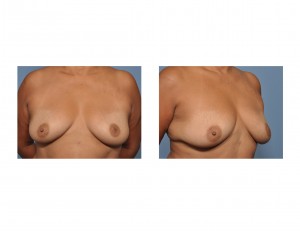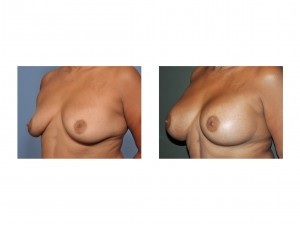Background:Breast augmentation continues to be a very popular body contouring procedure for women. Whether it is to improve a natural underdevelopment or the effects of pregnancy and gravity, increasing volume is one of the key components of breast enhancement. The majority of breast implants are placed in women under the age of 45, particularly in the age range of 21 to 35. Because of this understandably age-skewed patient population and the amount of press and publicity that younger women get for undergoing the procedure, many older women wonder if they too can have the procedure.
I have had many older women (age 50 or older) in my Indianapolis plastic surgery practice ask if it is ‘safe’ for them to have breast augmentation. This concern about safety in ‘older’ patients relates to what the recovery would be like and are implants more prone to cause breast problems in older tissues.
Recovery after breast augmentation, due to the most common positioning of the implant under the pectoralis muscle, relates to a muscle injury recovery. While an older patient may take a little longer to recover from a pulled muscle than a younger one, that difference is relatively small. (if it exists at all) I have not noted that older breast augmentation patients report a more difficult or protracted recovery process nor are their complaints about immediate postsurgical pain any more significant.
Because breast cancer occurs more commonly in middle-aged and older women than younger ones, it is a legitimate question to ask if implants interfere with its diagnosis. There is no question that there is mild interference with radiologic imaging of the breast from implants, but this is overcome by taking additional mammographic views. When it comes to MRI detection, there is no imaging difficulty.
The one issue that older women pose that many younger women do not is breast sagging or ptosis. The incidence of the need for breast lifts with implant placement is much higher in the older patient as the effects of gravity and aging have taken a greater toll.



It usually takes aboutthree to four weeks after surgery until breast implants settle into their final position. This is particularly true in using the transaxillary approach as the release of the lower breast tissues is done more effectively by an open inframammary crease approach.
Case Highlights:
1) Breast augmentation is just as safe and effective in older women as it is in younger women.
2) In the aging breast, the higher incidence of breast sagging may require the consideration of some form of a breast lift or the acceptance of less than ideal breast shape and nipple position.
3) Recovery after breast augmentation in older women is no more severe or prolonged than that of younger patients.
Dr. Barry Eppley
Indianapolis, Indiana



